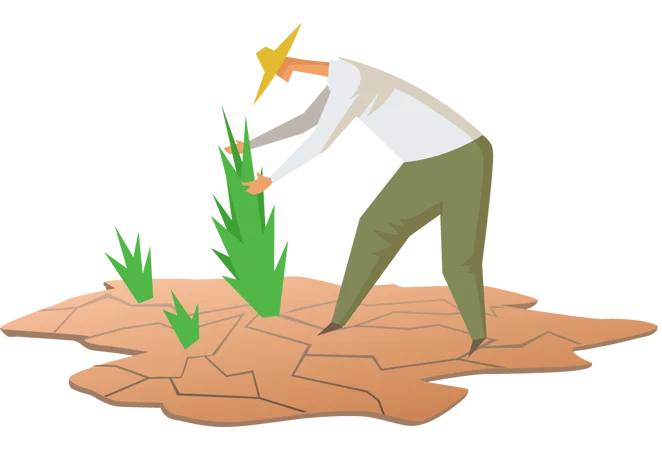As America’s top agricultural state, California produces more than 400 agricultural commodities and supports hundreds of thousands of jobs. While the state’s agriculture includes grains, vegetables, fish and livestock, it’s best known for its fruits and nuts. In fact, California produces nearly two-thirds of the nation’s fruits and nuts with an annual revenue of $15 billion.

But now California’s thriving agriculture is under threat from climate change. From rising temperatures that affect growing seasons to water scarcity brought on by brutal summers and droughts, the Golden State’s farms are feeling the heat.
In the San Joaquin Valley, the nation’s most lucrative agricultural area, warm-season temperatures have risen by 1.4ºC (2.5ºF) since the 1970s, with an additional increase of 2ºC anticipated by mid-century. For sensitive crops like fruits and nuts, even an average temperature difference of 1ºC can have substantial implications.
As climate change shows no signs of slowing down, experts have highlighted the need for new technology to aid crop adaptation in response to hotter temperatures and ongoing water stress. Here’s how Opti-Harvest has stepped up to the challenge.
Science finding solutions
Opti-Harvest’s products are designed to transform the commercial growing of high-value specialty crops by better harnessing sunlight, improving water use efficiency, and mitigating harmful environmental effects.
Our patented Opti-Filter™ light filtration technology converts natural sunlight into red-enriched light, which fuels photosynthesis and triggers a growth response in plants. To get just the right pigment of red, we partnered with chemical giant BASF, and optimized our products to collect and disperse light properly. This red-light enhancement leads to faster growth, denser and healthier canopy and root systems, and more efficient water usage.
The overarching goal is to channel more sunlight to leaves that normally wouldn’t receive direct light, essentially fast-tracking plant growth to compensate for limited water availability. This accelerated growth may even reduce the need for water, essentially “irrigating with photons” and keeping crops alive. By focusing on the sun’s most growth-promoting rays and filtering out inhibiting ones, Opti-Filter gives plants exactly what they need to thrive.
Our Opti-Gro™ polymer tubes, Opti-Panel™ canopy unit, and Opti-Shield™ cones can be placed on, above, or around trees and other crops to create a microclimate environment and prevent overheating. Opti-Shield’s interior texture uniformly distributes light into Opti-Gro tubes, which allow the reflected light to reach beneath the tree’s canopy, where it’s normally shaded. And Opti-Shield improves the microclimate by preventing wind-breaking and extending the daily growing period.
Protecting plants for future generations
According to the World Food Programme, more than 345 million people face food insecurity in 2023, which is more than double the number in 2020. Here in the U.S., our agriculture industry faces its own unique set of challenges, particularly in the San Joaquin Valley, as California’s Central Valley Flood & Drought Trends indicate.
As the world grapples with rising temperatures and the subsequent threat to our food supply, innovative solutions are more critical now than ever. That’s why, if you’re a commercial grower or farmer, working with Opti-Harvest can empower you to grow crops sustainably and safely. Let us help you prepare for the future of farming in a climate-challenged era.
